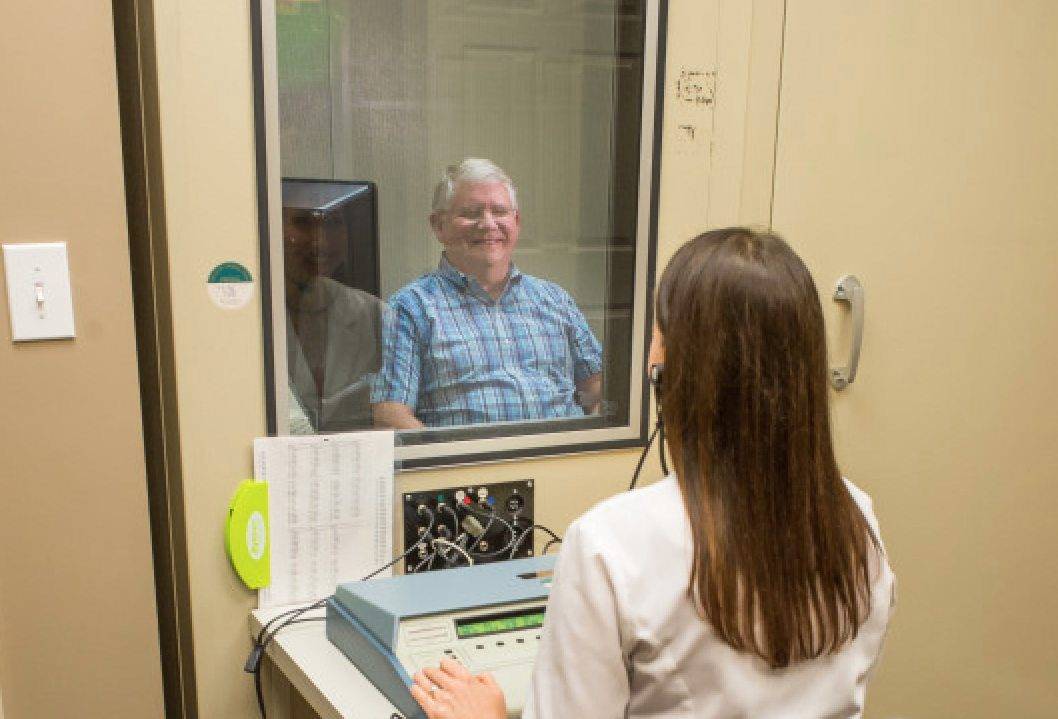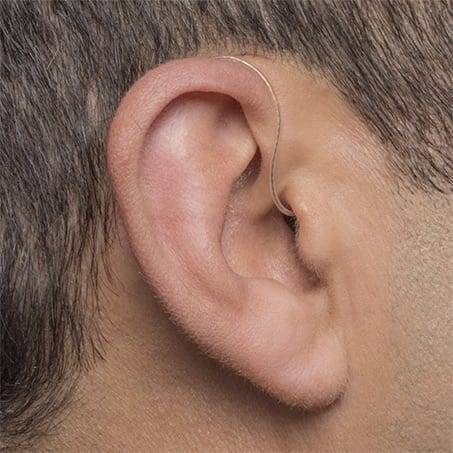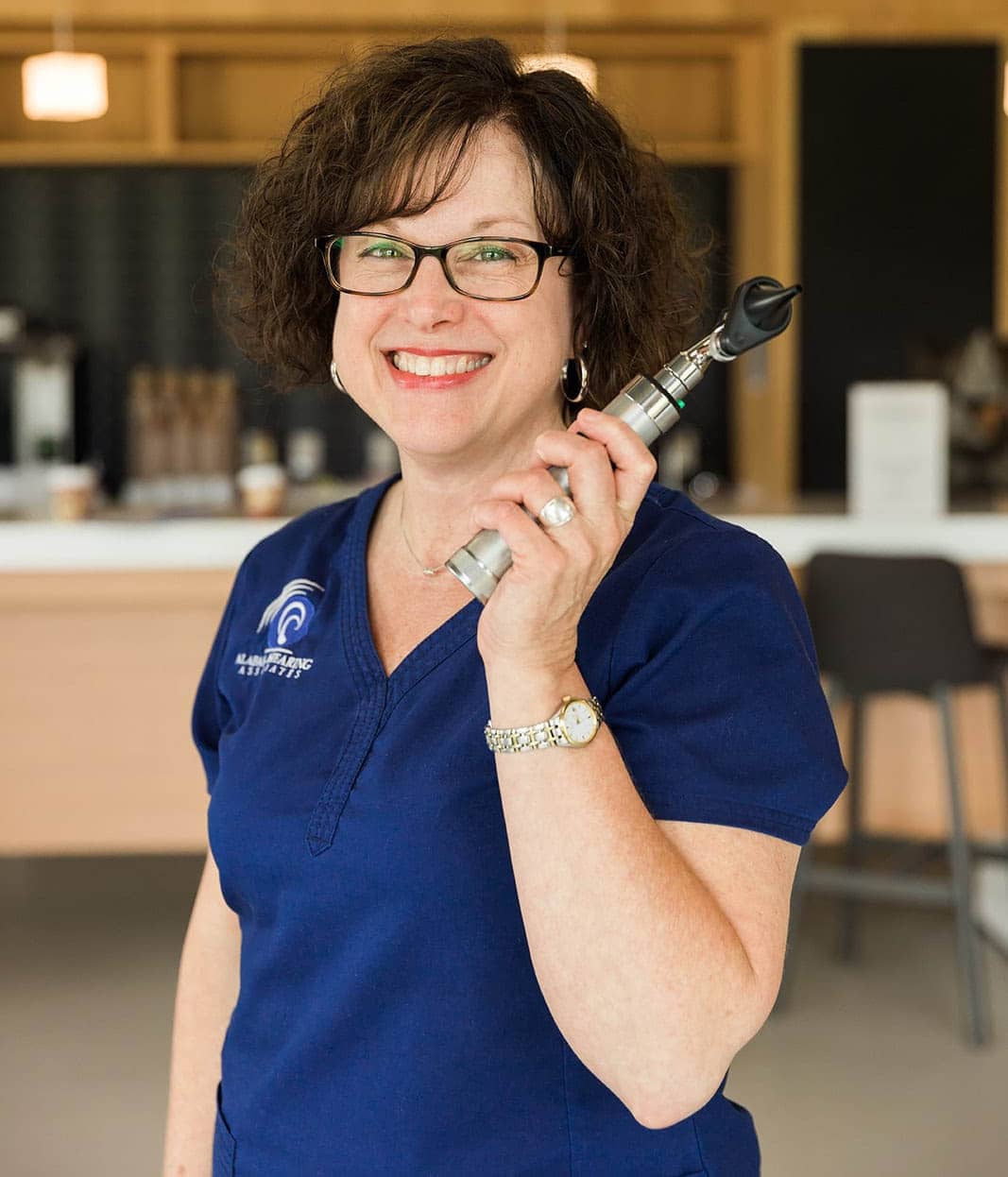Real ear measurement (REM) is how an audiologist knows that hearing aids are working the way they should in each patient’s ears.
Ears are as unique as a fingerprint. Because of this, every ear will collect sounds differently.
Even if I had two patients with the exact same hearing loss and hearing aids, there’s almost no chance the hearing aids would be programmed the same way.
What happens during a real ear measurement session?
The first step of real ear measurement is cleaning any earwax or cerumen that is in the ear canals because it can change the acoustics of your ear and plug electronics.
The next step is putting a little microphone into the ear canal – placed very near the eardrum.
The microphone, or probe tube, is a very soft and flexible tube. It can be daunting for some patients when we’re putting something so close to their eardrum, but most patients say that it tickles.

To ensure that the tube is deep enough, I then measure the acoustics of the ear canal without a hearing aid.
If it isn’t deep enough, I will modify the depth and remeasure until it’s correct.
The next step is making a similar measurement with the hearing aids on; I measure the output of the hearing aid while the patient is listening to a speech passage.
I then compare the results to targets based on the patient’s age, gender, hearing loss, cognitive health, noise tolerance, and hearing aid experience.
Finally, I make incremental changes to the hearing aid programming to ensure that the hearing aids meet the targets for soft, medium, and loud sounds.
This part probably takes the longest, as I’m a perfectionist when it comes to hitting the targets.
Every once in a while, I might need to change the earpiece or strength of the hearing aid to ensure that the targets are being met appropriately.
Once I’m satisfied that the targets are appropriately met, I verify that the sound is comfortable in the patient’s ear.

I also go over the patient’s results as an educational tool and so they are kept informed of the processes behind their hearing health.
Is real ear measurement necessary?
There is overwhelming evidence supporting the absolute necessity of real-ear measurement in long-term hearing aid satisfaction, but REM can be somewhat controversial.
It takes time, knowledge, and the proper equipment, so many healthcare providers do not complete REM regularly.
REM should be completed at every hearing aid fitting, whenever hearing has changed, and whenever ear-canal acoustics change.
If you see an Audiologist that does not do REM routinely, they are not following Best Practices.
Real ear measurements at Alabama Hearing Associates
While I love every step of the journey to better hearing, REM is probably my favorite. I cannot tell you how many frustrated hearing aid users I’ve helped by “adopting” them and refitting their current devices using real ear measurement after the Communication 365 Assessment.
There is no better way to individualize a hearing aid fitting or optimize a patient’s current hearing aids.
If you have any questions about real-ear measurement and why it’s so important, please call us at 256-319-4327 or schedule a no-charge 15 minute “Pick My Brain” appointment with one of our audiologists.












